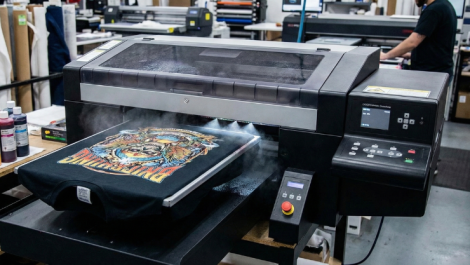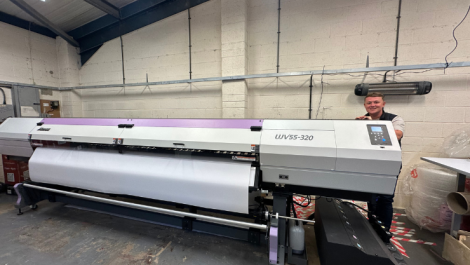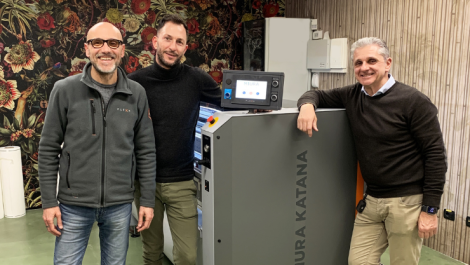Roland DG has introduced a high productivity addition to its textile printer range, the ZT-1900, a 1.9m roll-fed dye sublimation transfer model capable of up to 150sqm/hr in production mode. It is said to bring a quick ROI through low running costs and efficient ink performance.
As the largest and fastest dye-sub printer in Roland DG’s portfolio, the ZT-1900 is aimed at volume production of fashion, sportswear, personalised interior decoration and soft signage. A ‘mirrored’ CMYK configuration (two channels per printhead, four printheads) plus an integrated infra-red dryer for rapid drying of thermal transfer paper, which may be as light as 18gsm, allow a draft (single-pass) mode to reach 220sqm/hr and two-pass production mode at 150sqm/hr.
Kyocera printheads provide 600 x 300dpi resolution and Roland says its high density dye sublimation inks yield a wide colour gamut as well as being compatible with both coated and uncoated transfer papers for production versatility, including self-adhesive types for working with cut fabrics as well as rolls. High volume production is facilitated by support for paper rolls weighing up to 450kg, which together with 5kg ink containers which can be changed during printing allow lengthy periods of uninterrupted operation. Control software, based around a tailored version of the ErgoSoft RIP, allows RIPped files to be reprinted without having to be processed again. Real-time information about productivity and ink consumption is available to operators so that actual jobs costs and throughput can be monitored.
Paul Willems, director of business development and product management EMEA said, ‘The ZT-1900 is ideal for existing users of digital sublimation printers seeking to increase production, and for businesses who are currently using analogue methods who want to move into digital with a high-productivity, high-quality system. The cost efficiency and low running costs of the ZT-1900 will also benefit anyone working to extremely tight margins.’
The Roland ZT-1900 is available now across the EMEA region.




